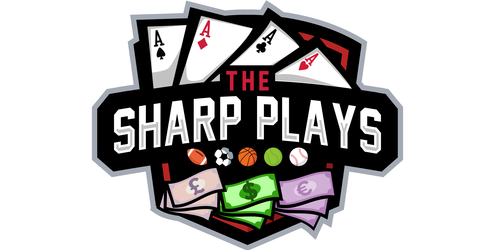
🤔 “If the Book Has So Much Liability, Why Doesn’t the Line Reflect It?”
This past NFL Divisional Playoff weekend sparked a ton of questions, especially about market moves that didn’t seem to align with the reported liabilities books were carrying:
- Why was Buffalo -6 — the highest line of the week — when all the money was on Cincinnati?
- Why was San Francisco only -3.5 with heavy liability against Dallas?
Let’s clear the smoke…
🚨 The Biggest Horseshit Myth in Sports Betting
You’ve heard it a million times from media talking heads:
“Books want 50/50 action on both sides so they profit off the vig!”
Yes, that will be a profitable structure in theory due to vig — but it’s not how real bookmakers operate.
💰 The Book’s True Goal: Maximize -EV Action
A real bookmaker’s goal is not balance.
It’s to get as much action as possible on prices that are -EV (negative expected value).
If 100% of the money is on a -EV line? Beautiful.
“But isn’t that risky?”
Only in the short-term. Over the long haul, math always wins.
📈 A Quick Refresher on Expected Value
- +EV (positive expected value): Wager that, over time, returns profit.
- -EV (negative expected value): Wager that, over time, bleeds money.
Smart bettors (you, hopefully) only want to touch +EV bets.
Bookmakers want to hang prices that create -EV bets…and seduce you into taking them.
🧠 Applying This to the Playoff Lines
🧊 Cincinnati at Buffalo (Buffalo -6)
- Market opened at Buffalo -4, closed Buffalo -6
- Public was HAMMERING Cincinnati
- So why did the book raise the line?
Because they saw Cincinnati +6 as a -EV bet.
Buffalo -6 wasn’t amazing value anymore, but it was at worst a mild +EV side.
Bookmakers weren’t trying to balance the action — they were happy:
- Massive volume on Cincy +6 (a bad price)
- Minimal sharp exposure on Buffalo -6 (a neutral or mild value)
Perfect market for a book.
🧊 San Francisco vs Dallas (San Francisco -3.5)
- Line opened San Fran -4, dropped to -3.5
- Public was all over the Niners
Why not move the line to -4.5 or -5 to balance it?
Because -3.5 was bait. A juicy number the public couldn’t resist.
But not juicy enough for sharp money to hammer Dallas.
Result? A steady stream of bets on a -EV Niners price, with low exposure on the +EV Cowboys.
📉 Recap of Results
- Cincinnati and San Francisco — the public sides — both lost.
- Books nailed it.
The takeaways?
- Public money chased -EV lines.
- Books avoided giving away value.
- The “line movement” isn’t always what it seems.
🎓 Bonus Lesson: Reading the Book’s Intent Through Price Action
A line move isn’t just a number.
It’s the book talking — if you know how to listen.
If a book:
- Raises a line despite heavy public liability — they want more of that -EV action.
- Refuses to adjust a number despite lopsided volume — they’re painting a masterpiece.
This works across all sports and totals. It’s not gospel, but it’s a powerful read.
🧮 Want Some Math with That?
Let’s say:
- Both Buffalo and Dallas were the +EV sides, giving them a 53% chance to cover.
- Books offered a parlay payout of +264, implying a 27.47% chance of both legs hitting.
Actual Probabilities:
- Buffalo & Dallas win → 28.09%
- Buffalo & SF win → 24.75%
- Cincy & Dallas win → 24.75%
- Cincy & SF win → 22.09%
👉 Parlay expected probability: 28.09%
👉 Book implied probability: 27.47%
➡️ 0.62% edge in your favor
That’s value. That’s how you grind. That’s how you win.
💡 It won’t cash every time, but over thousands of similar spots, that 0.62% edge adds up.
🕵️♂️ Let’s Take This One Step Further…
What did the books tell us through their price moves?
- Cincinnati & San Francisco were overvalued
- Books encouraged action on them despite liability
- That’s not fear — that’s strategy
Now let’s look forward.
🔮 Implications for the Next Week
Eagles vs 49ers
- Book moved from Eagles -7.5 to -8, despite NY Giants liability.
- That tells us Eagles were undervalued.
Result? Eagles obliterate the Giants.
Now, sharps hammer the Eagles again early vs SF.
Book moves from -1.5 to -2.5, fast.
They likely mispriced it, showing SF is still overvalued.
Bengals vs Chiefs
- Mahomes injury clouds everything.
- But line moved from KC -2 to Cincy -1.5, on public money.
Given:
- Cincinnati was already overvalued last week
- Public hammering them again
- Mahomes issue known before line posted
➡️ Cincinnati -1.5 is likely not a value
➡️ KC +1.5 likely is
🎁 One Final Tool for Your Arsenal
“If I always bet when the percentages favor me like this… I will never lose in the long run.”
You won’t win every bet. You won’t win every week.
But value stacks up. Edges compound.
Use price movement to read market sentiment.
Trust math. And when books hand you insight — listen.
🎤 Final Thoughts
This post wasn’t about predicting outcomes.
It was about understanding the market.
How books operate. What their movements mean.
And how to find value in a rigged — but not unbeatable — system.
🧠 “Math always wins. You just have to let it.”
Good luck out there.
